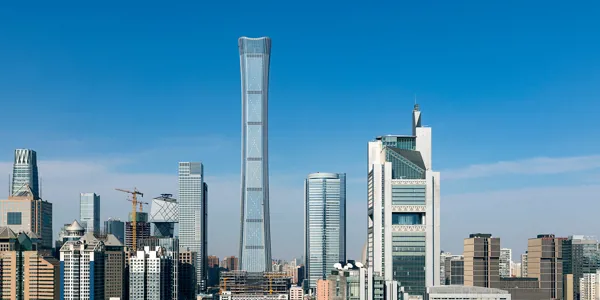China update: could social unrest end zero-Covid?
China’s zero-Covid policy has been a sore spot with investors. It has continued to force periodic lockdowns, disrupting economic activity and slowing growth. There are now growing signs of resentment among Chinese citizens, with protests breaking out in major cities. Could this force the Government to loosen restrictions at a faster pace?

The trigger for the unrest was the death of 10 people in an apartment fire in Urumqi, Western China. It is believed that the residents could not escape due to the Covid-19 restrictions imposed by the local government. The resulting wave of demonstrations mark the most significant turbulence in decades and will undoubtedly influence the Government’s position on reopening.
Stuck between a rock and a hard place
Since the start of the pandemic, China has employed a zero-Covid policy. The goal of this strategy is to get the country back to zero new infections, before resuming normal economic and social activities. A full reopening and a return to ‘normal’ would be preferable for the Chinese people and indeed the economy, which has struggled to make progress amid the disruption.
However, there have been two main constraints on a full reopening. The first is healthcare and this breaks down into three factors:
- First, not enough elderly people are vaccinated. In fact, only 40% of over 80s have had their full three shots of the domestic vaccine[1]
- At the same time, the domestic vaccine is far less effective than western jabs, which means citizens have less protection against serious illness
- Also, China doesn’t have enough intensive care unit (ICU) beds to deal with a potential surge of Covid infections
There are also political constraints. Before the Communist Party Congress in October 2022, the party could not change the zero-Covid policy because it was so closely associated with the President, Xi Jinping. Admitting it was no longer appropriate was unfeasible. His re-election in October cemented his position as party leader, allowing some flexibility. On 11 November, the Chinese Central Government outlined 20 measures for easing zero-Covid. This was effectively trying to move to a Covid-0.5 strategy – not a full reopening, but progressing towards it. Markets responded positively with mainland equities up around 8% since the end of October [2].
This new strategy has now come under intense pressure. Protestors have suggested that the policy is to blame for the deaths in the apartment fire in Urumqi because the residents were locked into the building by local authorities. Demonstrations have been seen across major Chinese cities. While the Government has swiftly clamped down on the protests, it could lead to a further softening in policy.
In reality, the Chinese Community Party (CCP) is stuck between a rock and a hard place. Open up and they risk hundreds of thousands, maybe millions of deaths due to poor vaccination coverage and lack of hospital facilities. But maintain stringent Covid restrictions and they could face further social unrest.
A positive for markets?
The zero-Covid policy has been a major factor in the weakness of the Chinese stock market this year. It has been contributing to stalling economic activity and growth. At a time when the rest of the world is getting back to normal, China has stood as an outlier.
In terms of the near-term market implications, domestic shares sold off on Monday 28 November as concerns mounted about the social unrest. The US and other global markets also fell initially in response. Chinese markets have since recovered strongly as investors have speculated that this social unrest could mark the end of Covid restrictions. However, the messaging emerging from central government is more nuanced, with China’s National Health Commission stating that vaccinations would be sped up for over 80s. Investors will continue to watch communications closely as they look for further signs of reopening. The big risk for global markets is that the protests spill over into another Tiananmen square event. The CCP will be doing everything within their power to avoid this.
Many investors have been hoping that 2023 will be the year in which China returns to more normal economic conditions. Yet, recent events have been a reminder that the road to get there will be difficult.
China is likely to face a challenging winter as it tries to exit zero-Covid. Given the healthcare constraints, it seems unlikely that the CCP will risk a full and immediate reopening, despite the growing social unrest we have seen. But clearly, the probability of a messy exit is now higher.
From an investment standpoint, the advantages of a looser strategy are clear, but there may be some pain before those advantages are felt in stock markets. We are continuing to monitor the risks associated with the Chinese economy – they have implications across the globe.
Sources
[1] TS Lombard
[2] Bloomberg
Important information
By necessity, this briefing can only provide a short overview and it is essential to seek professional advice before applying the contents of this article. This briefing does not constitute advice nor a recommendation relating to the acquisition or disposal of investments. Details correct at time of writing.
The value of an investment may go down as well as up and you may get back less than you originally invested.
Past performance is not a guide to future performance.




